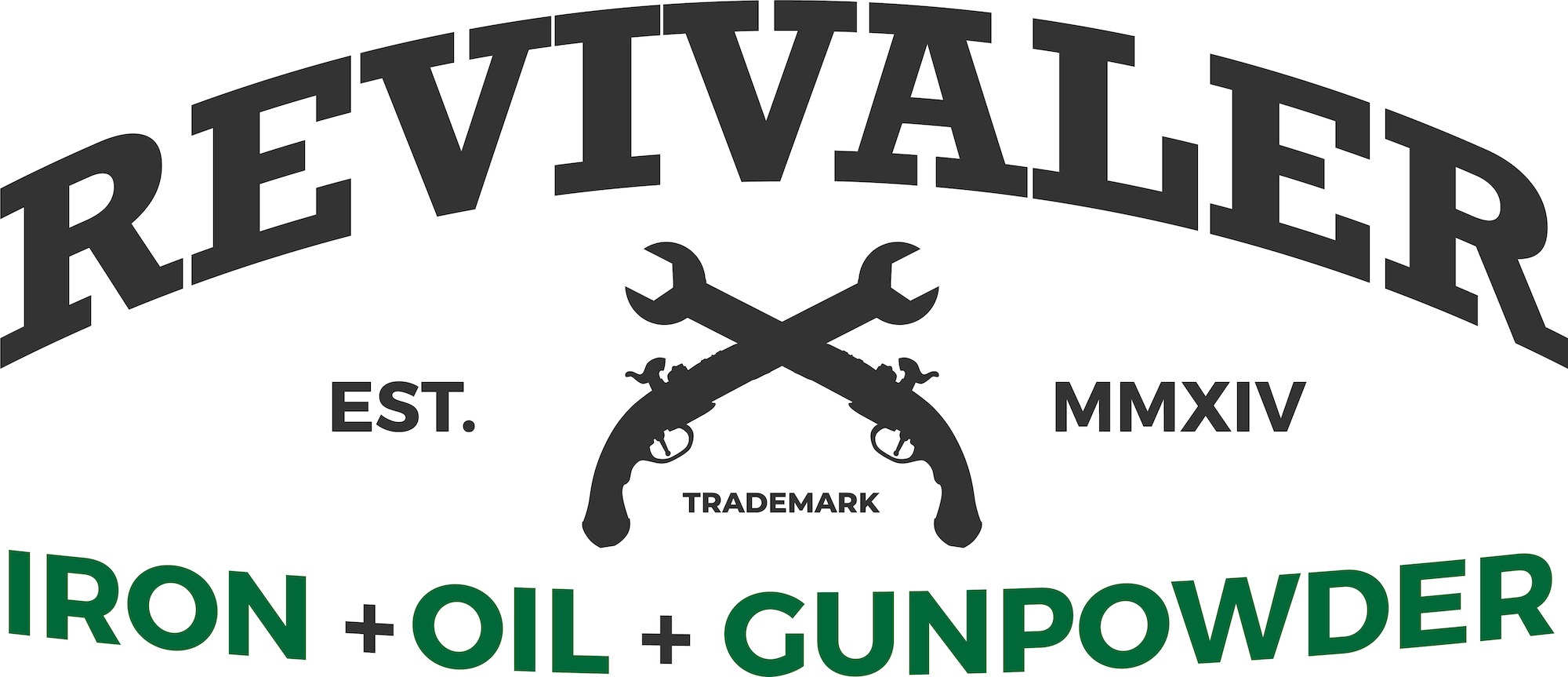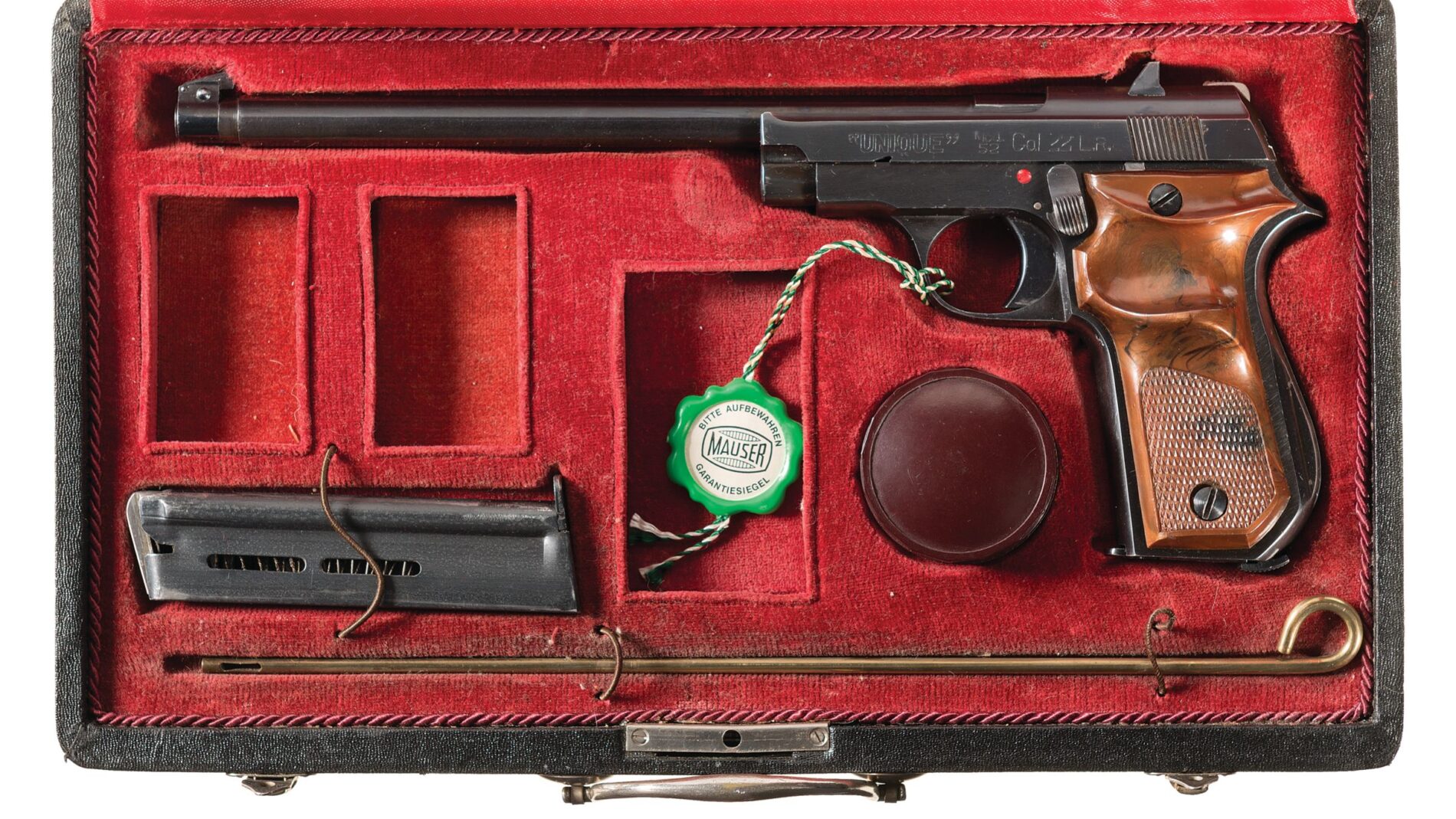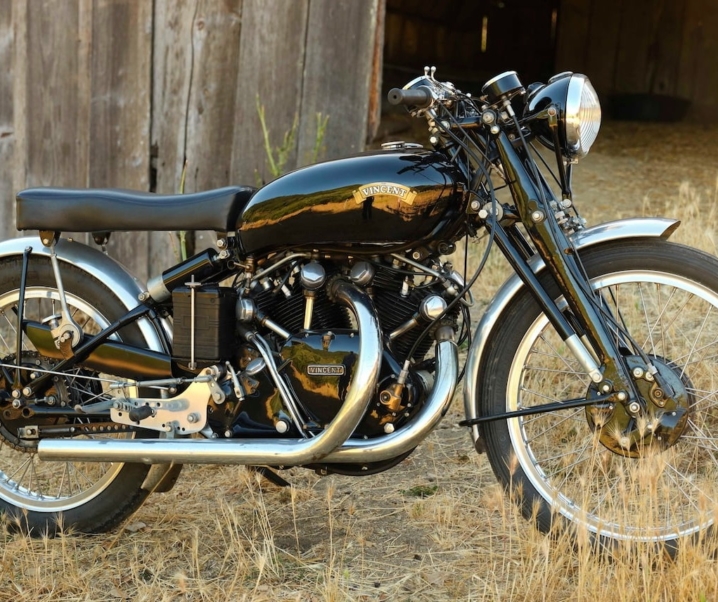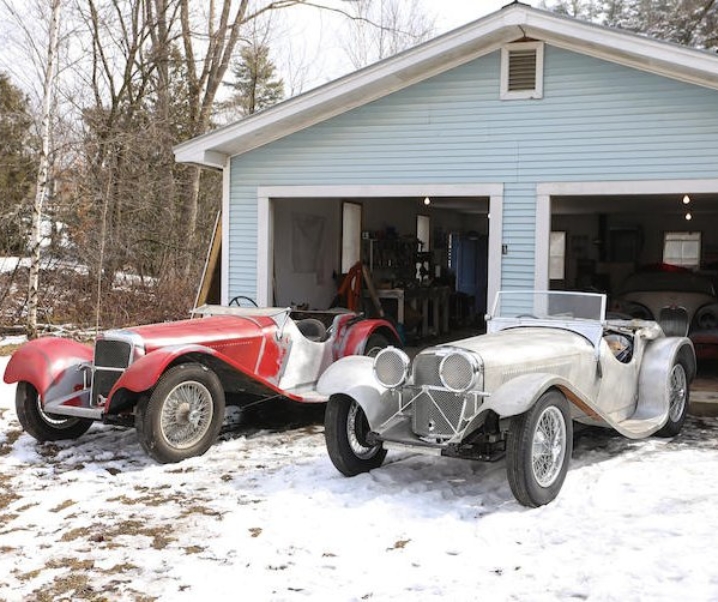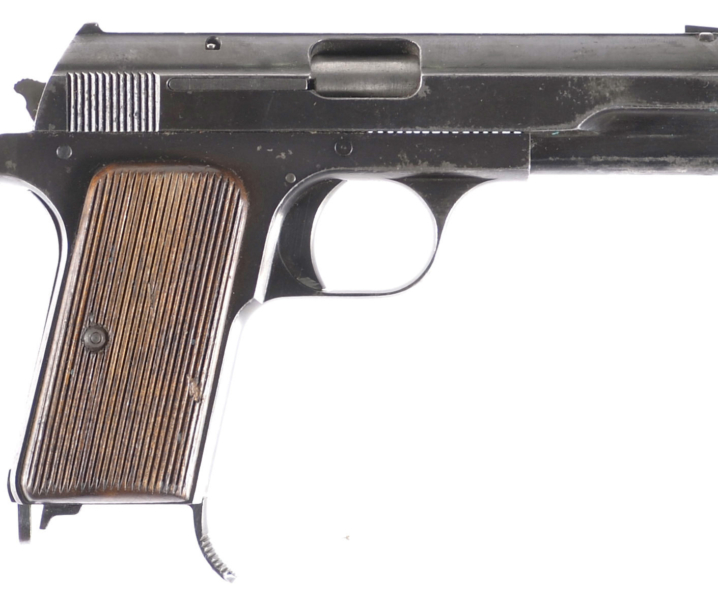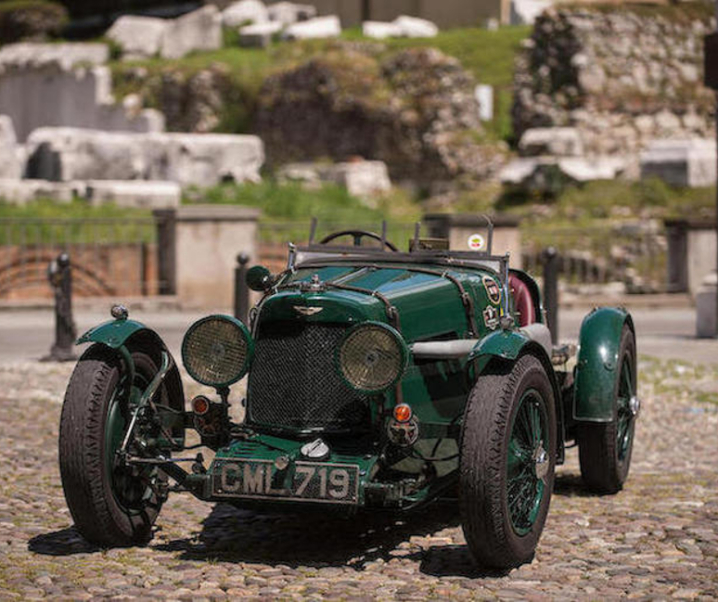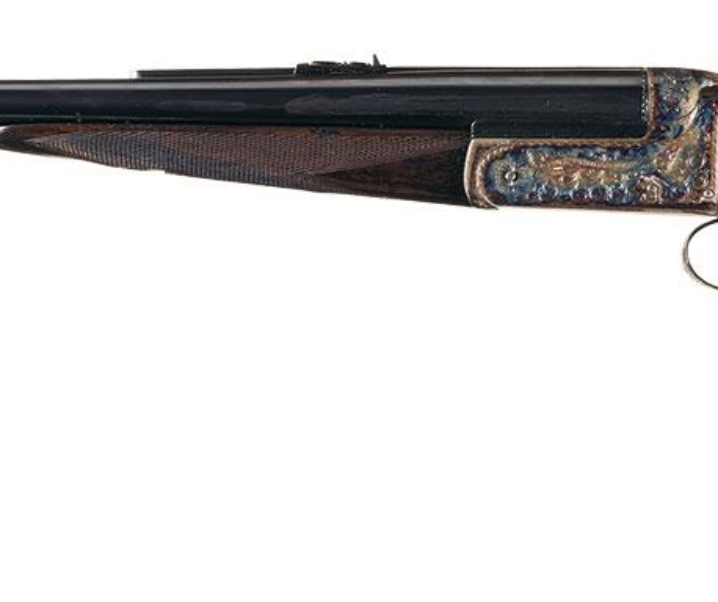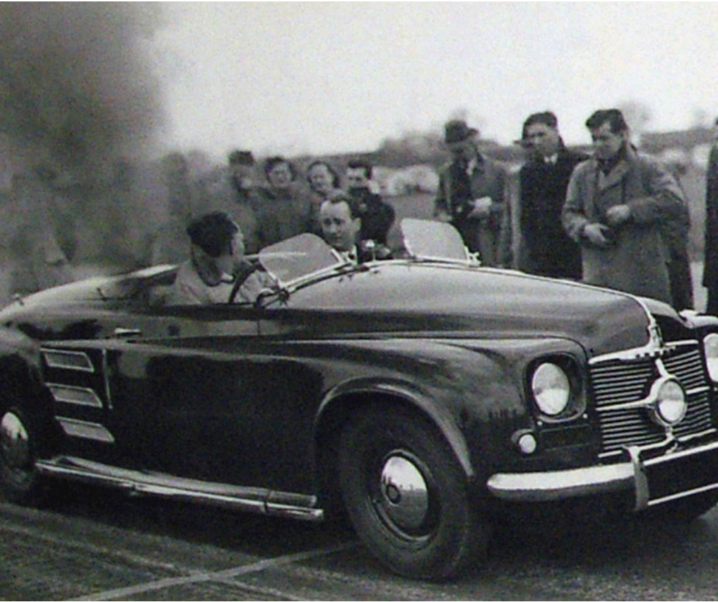The Unique Model D was a part of a quite numerous and historically interesting family of pistols made by MAPF. This family includes both military and police pistols, and sporting and self-defense pistols.
Fast Facts
- The Unique Model D was a descendant of the compact military and police pistols made by MAPF (Manufacture d’ Armes des Pyrénées Françaises).
- In the post-war period the original military and police pistol models were adapted to the 22lr cartridge to become the Model D, which was made in six variants.
- Associated with the Model D was the Model E which was made for the 22 short rimfire cartridge, and the Model L which was a compact version that formed a part of a Combo which enabled it to be converted into a carbine.
A Unique Model D was one of the first semi-automatic pistols I used when I was living and working in an Australian mining town, and I joined the local pistol club. That was back in the early 1970’s so it was a long time ago: but the memories remain fresh.
The Unique Model D was apparently quite common in pistol clubs around Australia. They were well made yet not expensive, simple to strip and clean.
About the only thing that made the Model D less popular was, in my view, the trigger pull, which was rather heavy.
One evening at the pistol club I decided to try to measure the trigger pull. We had a couple of standard weights for checking trigger pull on competition pistols: different matches required different weights. For Centerfire Match the weight was 1,360 grams (3lb), and for Standard Pistol it was 1,000 grams (2.2lb).
When we hung the 1,000 gram weight on the Unique’s trigger it did not cause the pistol’s hammer to drop. Then we hung the 1,360 gram weight on its trigger and again the hammer did not drop.
Then we hung both the 1,000 gram and the 1,360 gram weights on it – and – you guessed it – the little Unique Model D’s hammer still did not drop – even if we bounced the pistol up and down. So I guess the trigger pull must have been somewhere north of 5.5lb which would be perfectly sensible on a self-defense pistol or police pistol: but which was not ideal on a target pistol.
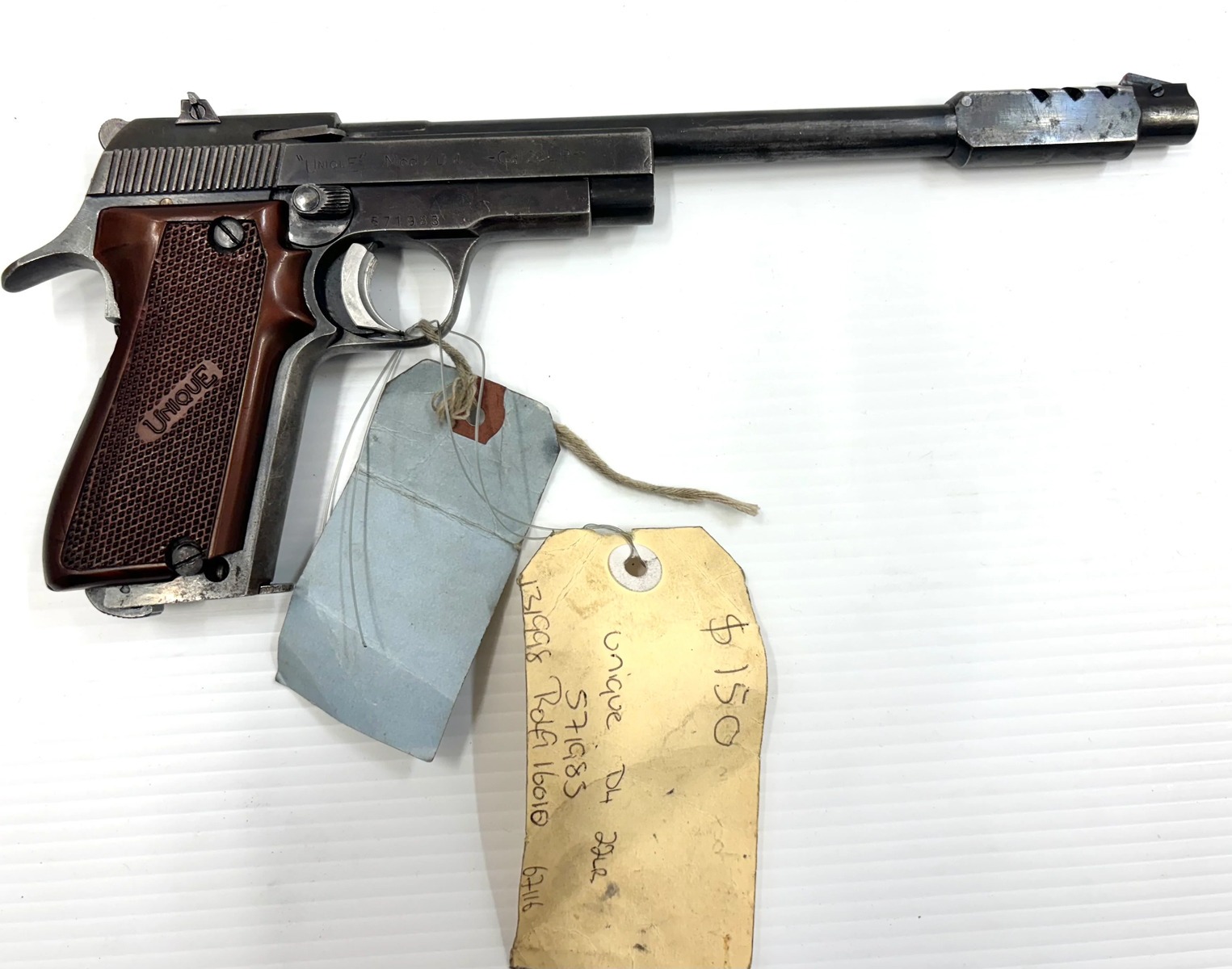
That being said it could be shot with decent accuracy by someone who invested the time and effort into mastering the trigger. So in that sense it was good as a club gun and it forced one to develop good trigger control.
Background History
The Unique Model D design was indeed drawn from military and police pistols of the early twentieth century. The original parent design was that of the Unique Model 17. The Model 17 was a centerfire semi-automatic pistol with an enclosed hammer that was based on the design of the Spanish “Ruby” pistol, which was in turn based on the design of John Moses Browning’s Colt Model 1903 Hammerless.
So the story of the Unique semi-automatic pistol began not in France, but in Spain.
The Great War (i.e. World War I) had begun in 1914 and by 1915 France was struggling to replace the firearms that were being lost in large numbers on the front.
To supplement their handgun supplies the French government got into an arrangement with Spanish gunmaker Gabilondo who supplied large quantities of their “Ruby” pistol chambered for the 32 ACP to the French.
In the post World War I period other manufacturers began making their own versions of the Spanish Ruby and one of these was Manufacture d’ Armes des Pyrénées Françaises, otherwise known as MAPF, who gave their pistols the “Unique” brand name.
MAPF made the Unique Model 17 pistol chambered for the 7.65x17mm (32 ACP) cartridge.
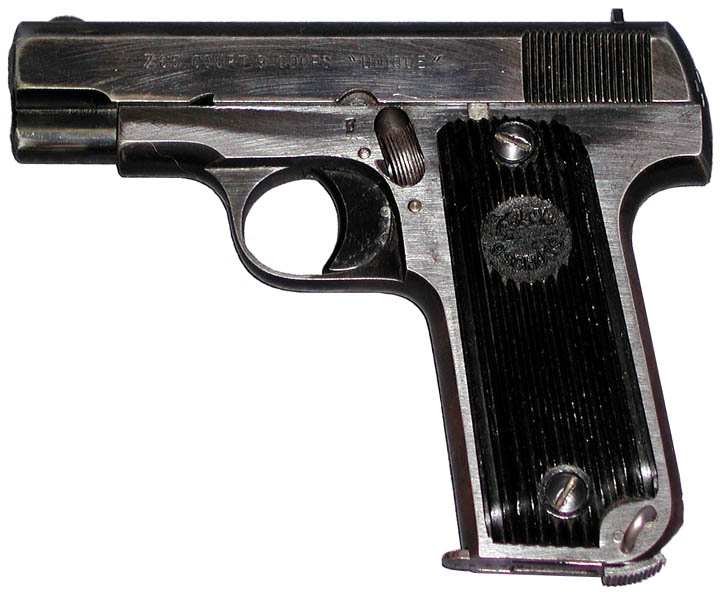
The Unique Model 17 continued in production in the years after the Great War although it did not gain formal military adoption – that honor was to go to the SACM (Société Alsacienne de Constructions Mécaniques) Model 1935 which had been designed by Charles Petter – the man who also designed the Swiss SIG P210.
With the Second World War looming the Unique Model 17 was made in significant numbers for the French military who were expecting a large influx of Nazi Germans who would attempt take over the country.
The Nazi army did indeed arrive in May of 1940 and established control of the nation, something which the French people were not the slightest bit happy about.
The Nazis not only continued production of the Unique Model 17 but also made some technical improvements to it and renamed it the Kriegsmodell. This model was in production from 1941-1944.
The notable improvements featured in the Kriegsmodell were the provision of an external hammer and an arched curved grip to improve the comfort in holding the pistol.
Production of the Kriegsmodell was brought to an end in 1944 when Allied forces landed in France and set about persuading the unwelcome Nazis to give France back to the French people.
The war in Europe ended on 8th May 1945 bringing to an end the years of oppression inflicted by the Nazi regime. This was a time of celebration in France and throughout the world, especially in Europe. The final end of the war happening on 2nd September 1945.
The Model Rr 51 and Rd 17
In the post-war period there was still demand for the small Unique pistols and so MAPF created two variants based on the Model 17 and the Kriegsmodell. These were the centerfire Rr 51 chambered for the 7.65x17mm (32ACP), and the Rd 17 chambered for the 22 long rifle cartridge.
These pistols both did away with the enclosed hammer of the Model 17 in favor of an exposed hammer. The Rr 51 found acceptance with French Police forces both in France and in her colonies, with more than 102,000 pistols being produced.
The police version of this pistol was the Bcf 66 and it was made in 32ACP (7.65 Court) and 380ACP (9mm Court)
There was also a Model 52 chambered for the 22lr which was made from 1952-1955 and which was based on the Rd 17.
All these pistols were very similar to the Beretta M1934 and its variants.
The Model D and its Variants
The Unique Model D was the new name for the Rd 17 and Model 52 22 rimfire pistols and it made its debut in 1954. It was made primarily for the sporting pistol market, which included target shooting applications, self-defense, and field use – such as a pistol to deliver the “coup de grace” if needed on fallen game.
The Model D used a simple blow-back semi-automatic action with the safety catch located above and to the rear of the trigger guard.
As a sporting pistol the Model D was made in six main configurations chambered for the 22 lr cartridge, and was also made in 22 short configurations as the Model E.
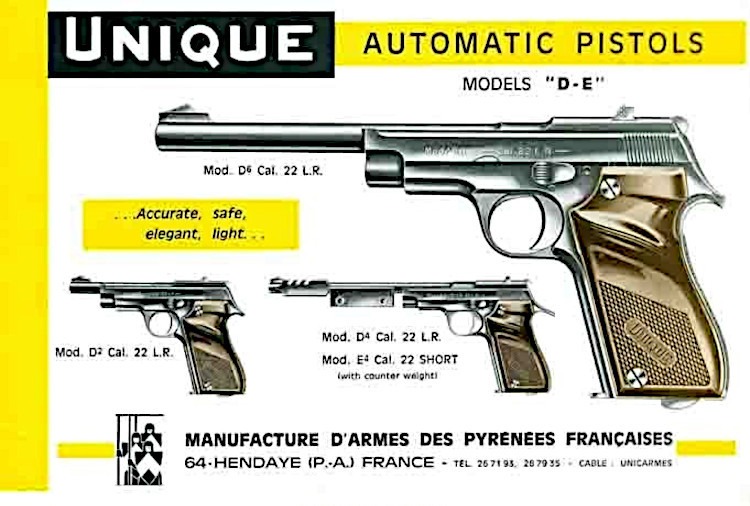
The Model D2 was a short barrel standard sporting pistol. The Model D4 featured a long barrel with fairly heavy muzzle break to reduce recoil – this pistol could be used for training and competing in the Olympic Rapid Fire Match. The Model D4 had a sister pistol in the form of the Model E4.
The Model E4 was a purpose designed pistol for the Olympic Rapid Fire Match. It was chambered for the 22 short cartridge and featured the same long barrel and heavy muzzle break as the D4, but it was also supplied with a removable counter weight that could be attached to the barrel and which would reduce the already mild recoil of the 22 short cartridge to near zero.
The following image provides more detail on the early production range of Model D and Model E variants. It is a high resolution image so if you click on it you can enlarge it and view the text in legible detail.
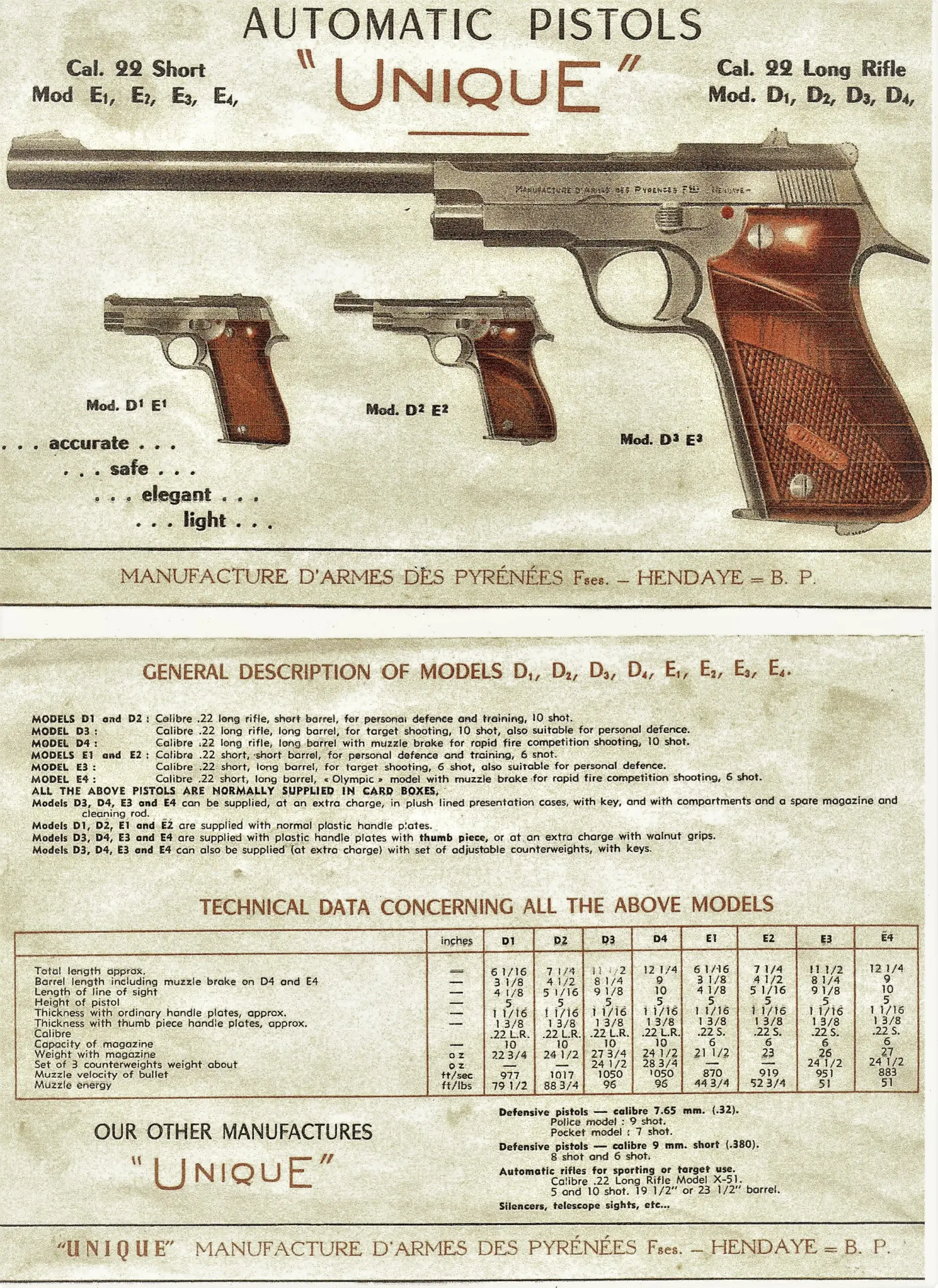
There were some other interesting variants of the Model D and E, and their predecessors the Rd 17 and Rr 51. Among these were the Corsair and Model L with its Model L Combination.
The Model L Combination was a carbine in 22lr which required a pistol Model L to be inserted into it. To do this the barrel of the pistol was removed and then the pistol action was inserted into the carbine body and secured there locating on the carbine’s barrel. So with this combination package you could use your Unique pistol either as a pistol or a carbine.
The Model L was a compact pistol based on the Model D which had a 3¼ inch barrel. It was offered in both steel frame and aluminum alloy frame versions. Interestingly the alloy frame Model L pistols were offered with frames in either red or blue anodized finish in addition to basic black.
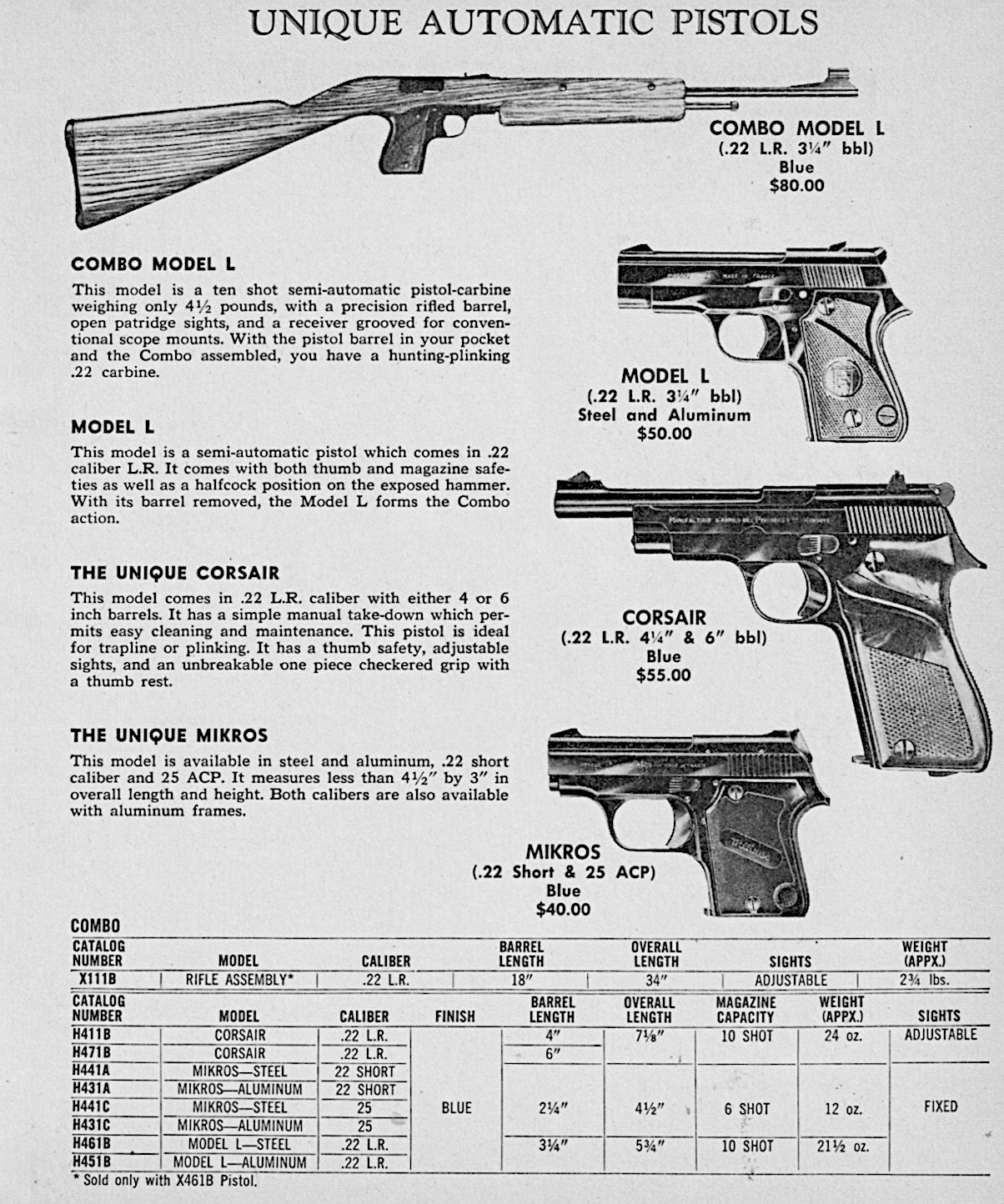
There is an excellent short video from “J” on YouTube showing the assembly and disassembly of the carbine Combo which you’ll find if you click here.
There are some good videos that show how to field strip the Model D for cleaning.
One of the pistols pictured in this post is for sale at the time of publication:-
The Unique Model D is a sweet little pistol with a fascinating family of siblings. It was also the predecessor of the Unique DES family of purpose built target pistols.
Given the rather extensive number of variants of this pistol one could potentially built up quite a collection of these if one so desired. They are a small, but historically significant part of French firearms history.
Picture Credits: Feature image at the head of this post courtesy Rock Island Auction. Other images as individually credited.
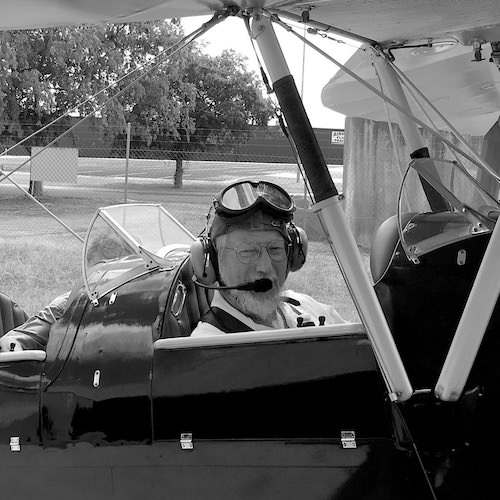
Jon Branch is the founder and senior editor of Revivaler and has written a significant number of articles for various publications including official Buying Guides for eBay, classic car articles for Hagerty, magazine articles for both the Australian Shooters Journal and the Australian Shooter, and he’s a long time contributor to Silodrome.
Jon has done radio, television, magazine and newspaper interviews on various issues, and has traveled extensively, having lived in Britain, Australia, China and Hong Kong. His travels have taken him to Indonesia, Israel, Italy, Japan and a number of other countries. He has studied the Japanese sword arts and has a long history of involvement in the shooting sports, which has included authoring submissions to government on various firearms related issues and assisting in the design and establishment of shooting ranges.
